The Current State of AI Readiness Among SMBs
In the fast-paced world of artificial intelligence (AI), small and medium-sized businesses (SMBs) are increasingly recognizing the potential of AI to revolutionize operations, enhance customer experiences, and drive innovation. However, the journey to AI adoption is not without its hurdles. According to recent research, the AI readiness of SMBs remains a significant concern, with many organizations struggling to keep pace with the rapid advancements in AI technology.
Despite the enthusiasm for AI, the Cisco 2024 AI Readiness Index reveals that only a small fraction of SMBs are fully prepared to integrate AI into their operations. This readiness is measured across six key pillars: Strategy, Infrastructure, Data, Governance, Talent, and Culture. Unfortunately, the majority of SMBs fall into the categories of Followers and Laggards, indicating a lack of comprehensive strategies and infrastructure to support AI deployment.
Key Barriers: Understanding the AI Skills Gap
One of the most pressing challenges facing SMBs in their AI journey is the widening skills gap. As AI technology evolves, the demand for skilled professionals who can develop, deploy, and manage AI solutions has skyrocketed. However, the supply of such talent has not kept pace, leading to a significant skills shortage.
The skills gap manifests in several ways. First, there is a lack of qualified candidates with the necessary expertise in AI and machine learning. This shortage is exacerbated by the rising costs of hiring skilled talent, which can be prohibitive for SMBs with limited budgets. Additionally, many organizations struggle with retaining their existing talent, as larger enterprises often lure skilled professionals with more attractive compensation packages and growth opportunities.
Investing in Talent Development and Reskilling
To combat the AI skills gap, SMBs must prioritize investing in talent development and reskilling initiatives. Building an internal pipeline of AI talent can help organizations reduce their reliance on external hires and foster a culture of continuous learning and innovation.
One effective strategy is to implement comprehensive training programs that focus on upskilling existing employees. By providing opportunities for staff to learn new AI-related skills, SMBs can leverage their current workforce to meet the growing demand for AI expertise. This approach not only enhances employee satisfaction and retention but also ensures that the organization remains agile and adaptable in the face of technological advancements.
Additionally, SMBs should consider partnering with educational institutions and professional organizations to access specialized training programs and certifications. These partnerships can provide employees with access to cutting-edge knowledge and best practices in AI, further strengthening the organization’s talent pool.
Leveraging External Expertise to Bridge the Gap
While developing internal talent is crucial, SMBs should also explore ways to leverage external expertise to bridge the AI skills gap. Engaging with third-party vendors, consultants, and contractors can provide immediate access to specialized skills and knowledge that may not be available in-house.
Outsourcing certain AI functions or projects to external experts can be a cost-effective solution for SMBs, allowing them to tap into a wealth of experience and resources without the need for long-term commitments. This approach can be particularly beneficial for complex or high-stakes AI initiatives where specialized expertise is critical to success.
Furthermore, SMBs can explore collaborations with larger enterprises or industry consortia to share knowledge and resources. By participating in industry networks and forums, SMBs can stay informed about the latest developments in AI and gain insights from peers who are facing similar challenges.
Fostering a Pro-AI Organizational Culture
Creating a pro-AI organizational culture is essential for SMBs to fully harness the potential of AI. This involves fostering an environment where employees are encouraged to embrace AI technologies and view them as tools for enhancing their work rather than threats to their job security.
Leadership plays a crucial role in driving cultural change. Executives and managers should actively promote the benefits of AI and communicate a clear vision for how AI will be integrated into the organization’s operations. By setting the tone from the top, leaders can inspire confidence and enthusiasm among employees, helping to overcome resistance to change.
Additionally, SMBs should implement change management strategies to support the transition to an AI-driven culture. This includes providing ongoing education and training, addressing employee concerns, and recognizing and celebrating successes in AI adoption. By creating a supportive and inclusive environment, SMBs can ensure that their workforce is fully engaged and motivated to leverage AI technologies.
Actionable Steps to Enhance AI Readiness in SMBs
To enhance AI readiness and address the skills gap, SMBs can take several actionable steps:
- Conduct a Skills Assessment: Evaluate the current skills and capabilities of your workforce to identify gaps and areas for improvement. This will provide a baseline for developing targeted training and reskilling programs.
- Invest in Continuous Learning: Create opportunities for employees to engage in ongoing education and professional development. Consider offering incentives for completing AI-related courses and certifications.
- Leverage Technology Partnerships: Partner with educational institutions, industry organizations, and technology vendors to access specialized training programs and resources.
- Outsource Strategically: Engage with external experts and consultants to fill immediate skills gaps and gain access to specialized knowledge for complex AI projects.
- Promote a Pro-AI Culture: Foster an organizational culture that embraces AI by communicating a clear vision, providing education and training, and addressing employee concerns.
- Implement Change Management Practices: Develop and execute a change management plan to support the transition to AI-driven operations, including regular communication, training, and recognition of successes.
By taking these steps, SMBs can bridge the AI skills gap and position themselves to fully leverage the transformative power of artificial intelligence. With the right strategies in place, SMBs can enhance their competitiveness, drive innovation, and achieve sustainable growth in the AI era.
References:
- Brynjolfsson, E., & McAfee, A. (2014). The Second Machine Age: Work, Progress, and Prosperity in a Time of Brilliant Technologies. W. W. Norton & Company.
- Bughin, J., Hazan, E., Ramaswamy, S., Chui, M., Allas, T., Dahlström, P., Henke, N., & Trench, M. (2017). Artificial Intelligence: The Next Digital Frontier? McKinsey Global Institute. Link
- Davenport, T. H., & Ronanki, R. (2018). Artificial Intelligence for the Real World. Harvard Business Review. Link
- Gartner. (2022). Top Strategic Technology Trends for 2022. Link




